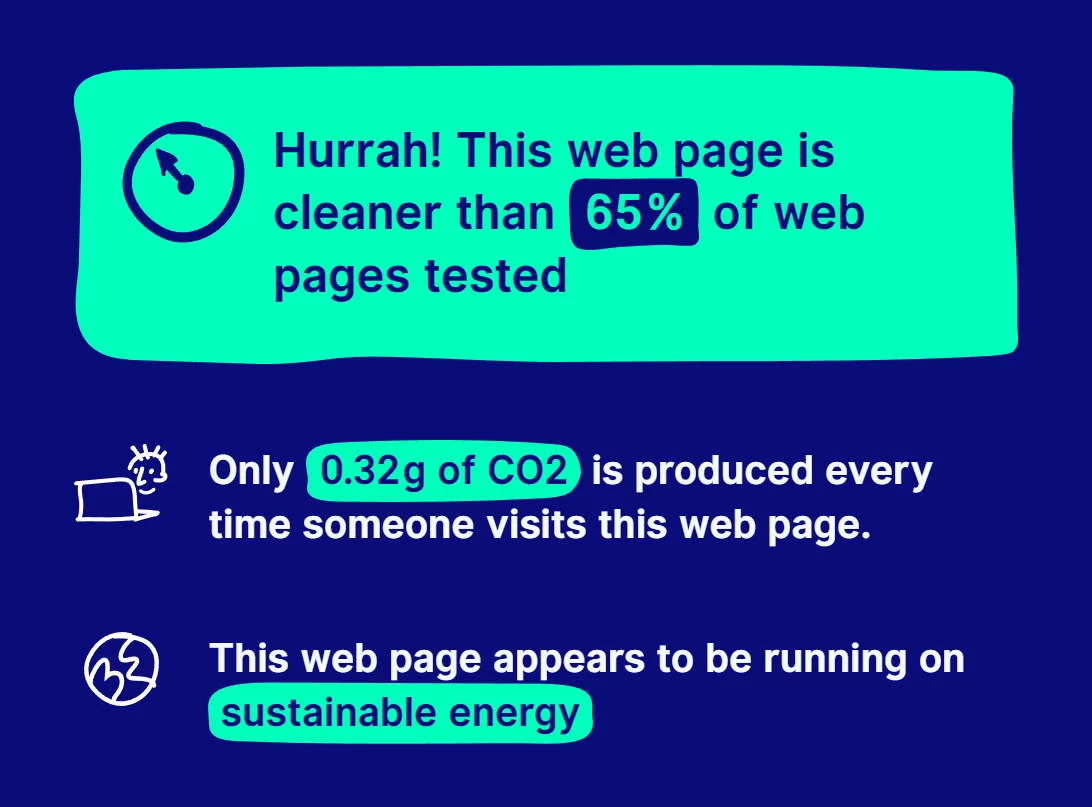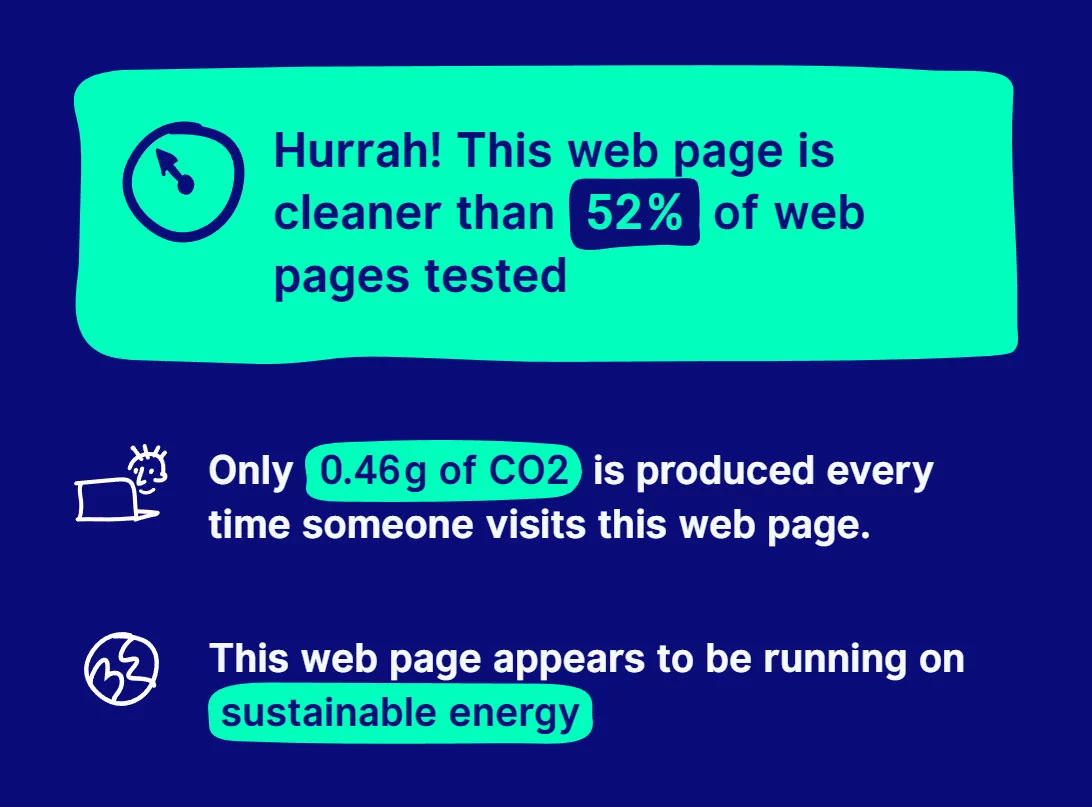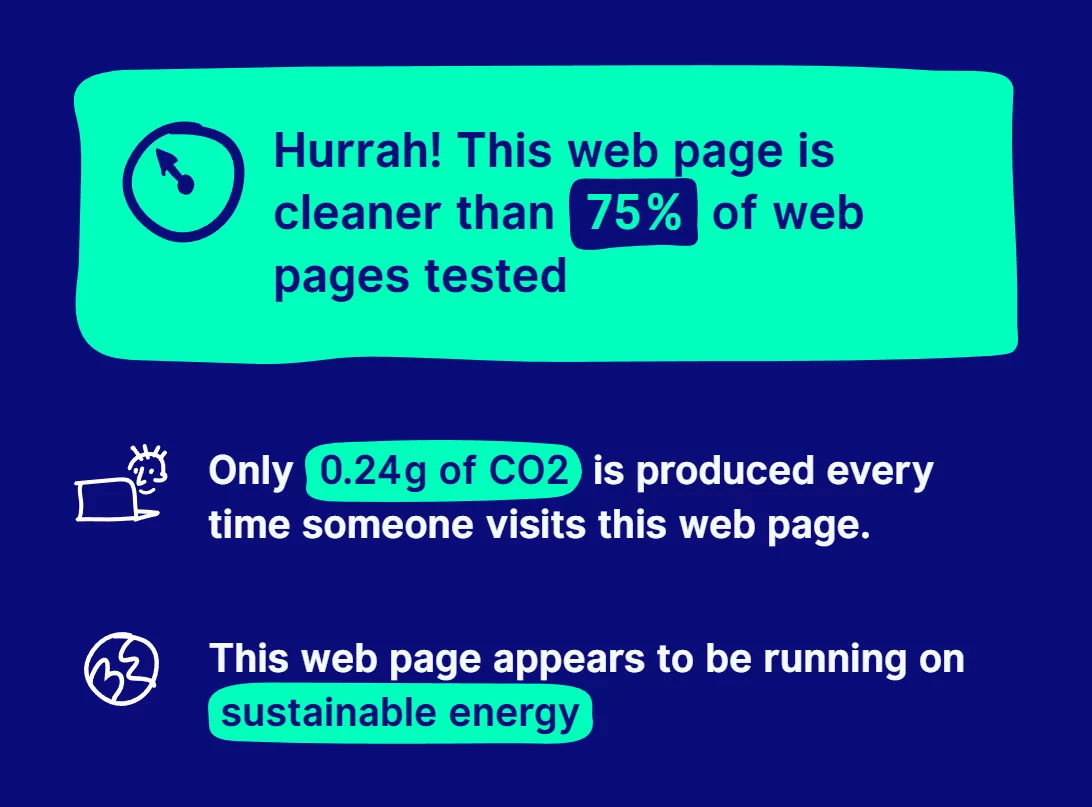What's The Environmental Effect of Website Design?

| Budō Creative | Web Design
We're moving into a new era where everything is being digitized. From online banking to e-statements and apps replacing physical papers, the world is becoming increasingly digital, and the impacts are enormous. But what does this mean for us? Well, if the Internet were an actual country, it would be the sixth biggest polluter in the world. That's right, according to Tom Greenwood, author of Sustainable Web Design book.
Have you ever wondered how much energy a website consumes?
We currently produce approximately 3.8 percent of global carbon emissions from the web. As we continue to increase our online activities, the amount of energy used by the web multiplies. It might seem far away and hard to imagine. Still, this huge power usage of the web has an enormous environmental impact, which we must address.
The relationship between websites and energy consumption starts in production, when computers, tablets, and cell phones are turned on to research, create, and test websites. Not to mention the time exchanging information with clients during the approval process - Sending one email with an attached picture can produce up to 50 kilograms of carbon dioxide emissions.
Once online, there is the energy consumed by rendering the website on your device and the energy used by the hosting server, which works 24/7.
According to sustainablewebdesign.org, when we use the Internet, four things affect our environment:
- Consumer device energy: The user's electricity involved in using your website accounts for 52% of the system.
- Network energy: Data transmitted via the network accounts for 14% of the total power consumption.
- Hosting: Energy used by the server to store and serve the content to the user. Account for 15% of the total energy consumption.
- Hardware production: The energy required to produce and maintain hardware accounts for 19%.
A typical web page produces 1.76 kilograms of carbon dioxide (CO₂) yearly. If you had 10,000 monthly visitors, this would equal 211 tonnes of CO₂ annually. For a single web page!
The energy-efficient website
So many things will drag down a website's performance, forcing users to sit around and wait while the server works hard to process data behind the scenes. The harder a computer or phone works to process web pages or download images, the more energy it's using.
Images play such an essential role on the web that it's no surprise how much weight they carry. According to HTTP Archive, the average weight of a website is growing, and the images are the most popular resource type on the web and makeup 50% of the average web page size.
Images aren't the only data hogs. Audio and video burn a lot of energy too. A video can be up to 10 times larger than an image and consume more bandwidth than images.
In addition, if your website uses JavaScript for dynamic content, it will also use a lot of energy.
To make sure your website doesn't suck up all the juice, here are some tips:
- Use fewer graphics. If you have to include them, choose high-quality ones. Instead of using JPEG or PNG files, use WEBP format for images. It reduces image sizes by up to 35 percent while increasing performance. You can also switch your icons and logos from PNG to SVGs which will help you save bandwidth and improve loading times.
- Avoid large files. Smaller files take less time to download and are easier on your server's resources.
- Use a CDN (Content Delivery Network) service such as Cloudflare or MaxCDN to cache the file; this can reduce the load on your website by up to 90%.
Do you have a sustainable website?
Sustainable or eco-friendly websites call for responsive designs, optimized graphics, minified codes, and other elements that enable companies to prioritize environmental sustainability and reduce their carbon footprints.
We tested three of our client sites, and here are the results:
-
Fermatix
-
ArtGold Jewelry
-
Bello Corpo Med Spa
Although the websites tested have shown positive results, we know that others in our portfolio need improvement. As part of our commitment to building eco-friendly sites, those are on our roadmap to be tweaked to reduce their carbon footprint later this year.
An eco-friendly website means making sure your website is easy to navigate and understand. You can then communicate your message to visitors using your website effectively.
You've already started well if you're thinking of your website's environmental impact. Sustainable design has grown and evolved to meet new technologies and economic conditions, so we must adapt too. You can use the free online service at www.websitecarbon.com to see how much carbon your site produces.
Did you find it helpful? Could you share it with your friends?
Join Our Newsletter
Sign up to receive our weekly newsletter delivered directly to your inbox.
No spam, ever. Your address will only be used for the company news. You can easily unsubscribe at any time with a single click.



